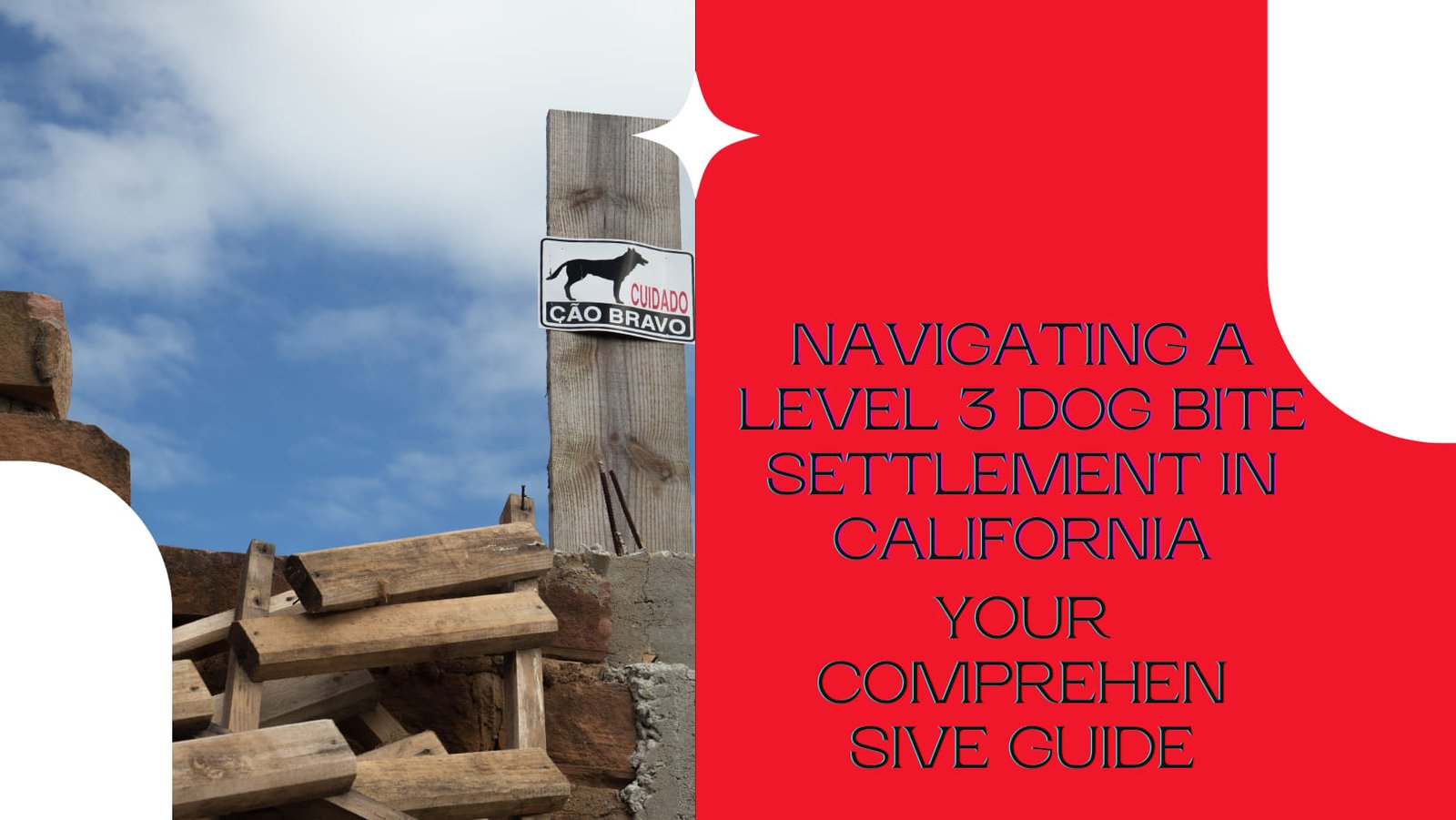Introduction
A level 3 dog bite can be a traumatic experience, both physically and emotionally. In California, the legal system provides recourse for victims, ensuring they receive compensation for their suffering. This article will guide you through the key aspects of a level 3 dog bite settlement in California, from legal definitions to the compensation process.
What Is a Level 3 Dog Bite?
A level 3 dog bite refers to a severe injury caused by a dog’s bite. These injuries often require medical attention and may result in permanent damage. Level 3 dog bites typically involve deep puncture wounds, extensive tearing of the skin, and sometimes even fractures.
Legal Definitions
Understanding the legal definitions surrounding dog bites is crucial for pursuing a settlement. In California, dog bite laws are clear. If a dog bites someone, the owner is usually liable for the damages, regardless of the dog’s previous behavior.
Key Steps in a Level 3 Dog Bite Settlement
Navigating the legal process of a dog bite settlement can be complex. Here are the key steps involved:
Seek Medical Attention
Your health is the top priority. After a level 3 dog bite, seek immediate medical attention. Document your injuries, as this will be crucial for your case.
Identify the Dog Owner
Identifying the dog owner is essential. Gather their contact information and, if possible, the dog’s vaccination history.
Report the Incident
Report the dog bite incident to your local animal control or law enforcement agency. This helps establish an official record.
Consult an Attorney
Consider consulting a personal injury attorney experienced in dog bite cases. They can provide valuable guidance and represent your interests.
Gather Evidence
Collect evidence related to the incident, including medical records, photographs of your injuries, and witness statements.
Negotiate with the Insurance Company
In many cases, the dog owner’s homeowner’s insurance policy covers dog bite claims. Your attorney will negotiate with the insurance company to secure a fair settlement.
File a Lawsuit
If negotiations fail, your attorney may advise you to file a lawsuit against the dog owner. This step is typically a last resort.
Compensation for Level 3 Dog Bite Settlement California
Victims of level 3 dog bites in California may be entitled to compensation for various damages, including:
Medical Expenses: This includes all current and future medical bills related to the dog bite.
Pain and Suffering: Compensation for the physical and emotional distress caused by the incident.
Lost Wages: If you miss work due to your injuries, you can seek compensation for lost income.
Scarring and Disfigurement: Compensation for any permanent scarring or disfigurement resulting from the dog bite.
Navigating Emotional Challenges
A level 3 dog bite can take a toll on your emotional well-being. It’s essential to seek support from friends, family, or even a therapist. The emotional trauma of the incident is a valid aspect of your settlement, and addressing it is crucial.
Understanding California’s Strict Liability
California operates under a “strict liability” rule regarding dog bites. This means that the dog owner is generally responsible for injuries caused by their dog, regardless of the dog’s history or the owner’s negligence. This legal framework can work in your favor when seeking compensation.
Documenting Your Injuries
Thoroughly documenting your injuries is vital for your settlement. Take clear photographs of your wounds and keep detailed records of all medical treatments and expenses. These records will serve as valuable evidence during negotiations.
Negotiating with Insurance Companies
Insurance companies may try to settle for the lowest possible amount. Having an experienced attorney by your side can make a significant difference. They will skillfully negotiate with the insurance company to ensure you receive a fair settlement that covers all your damages.
Preparing for a Lawsuit
In some cases, negotiations with the insurance company may not lead to a satisfactory outcome. Your attorney will guide you through the process of preparing for a lawsuit. This includes filing the necessary legal documents and building a strong case.
The Importance of Witnesses
If there were witnesses to the dog bite incident, their statements can be invaluable. Their accounts can corroborate your version of events and strengthen your case. Be sure to obtain contact information from any witnesses.
Compensation for Long-Term Effects
A level 3 dog bite can have long-term consequences, including ongoing medical treatments and emotional distress. Your settlement should account for these long-term effects to ensure you are adequately compensated.
The Role of Dog Owner Negligence
In some cases, the dog owner’s negligence plays a significant role in the incident. For instance, if the owner failed to properly secure their dog or ignored aggressive behavior, it could strengthen your case. Your attorney will investigate such factors.
Seeking Justice and Closure
Beyond compensation, pursuing a level 3 dog bite settlement in California is about seeking justice and closure. Holding the responsible party accountable can contribute to safer communities and prevent future incidents.
Conclusion
In conclusion, a level 3 dog bite settlement in California is a complex process that requires a thorough understanding of the legal system and a commitment to seeking justice. By following the steps outlined in this article and seeking professional legal assistance, you can increase your chances of receiving a fair settlement that covers your damages and helps you move forward with your life.
Remember, you are not alone in this journey. Reach out to professionals, gather evidence, and stand up for your rights. Your physical and emotional recovery is of utmost importance.
